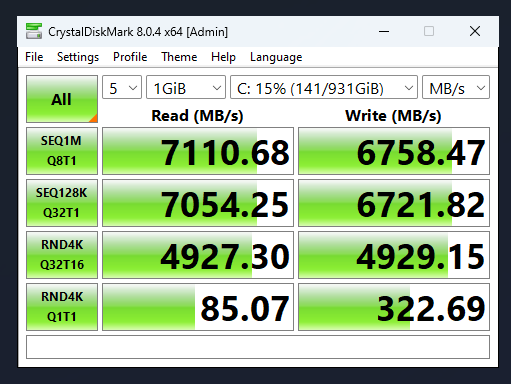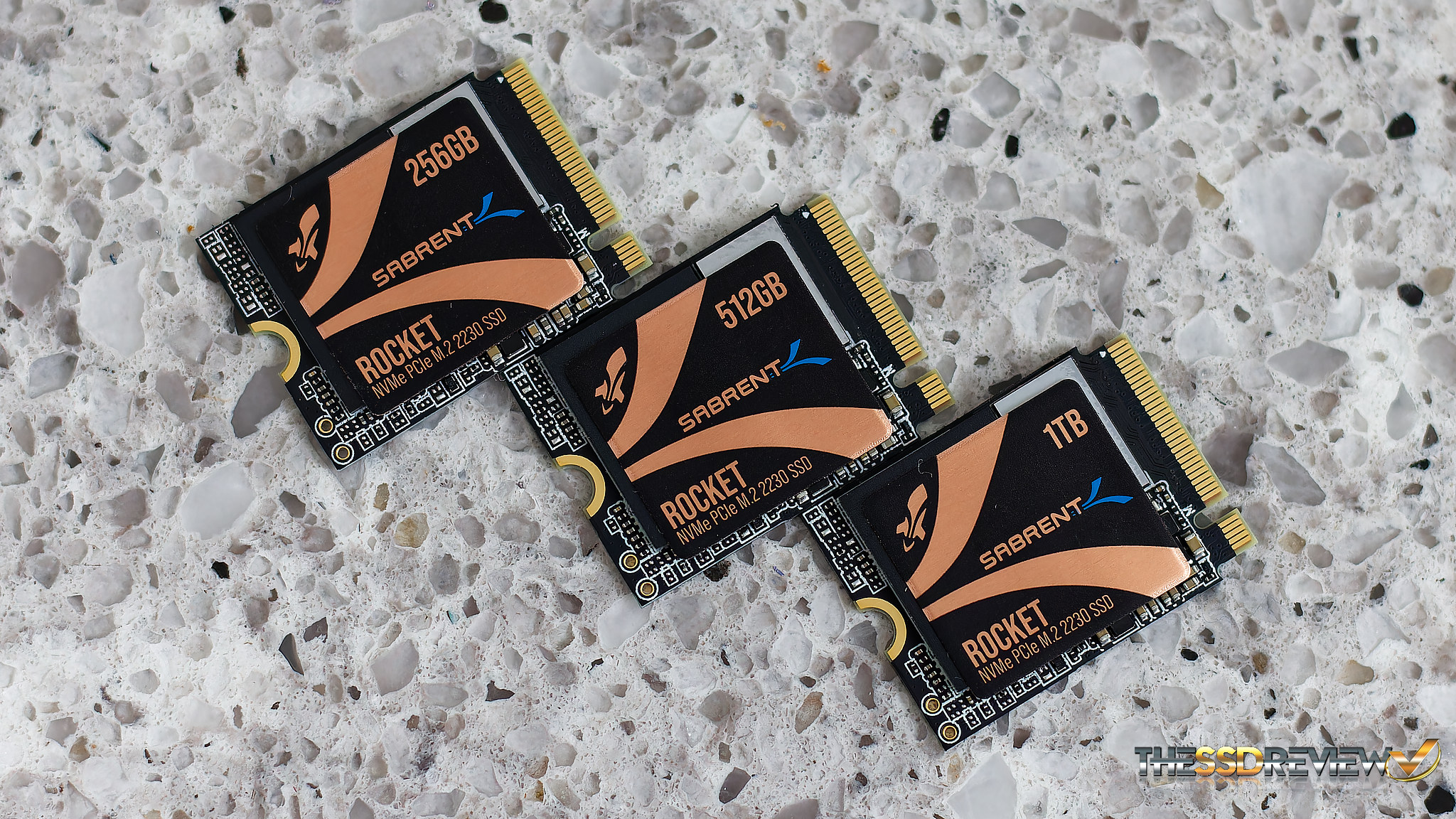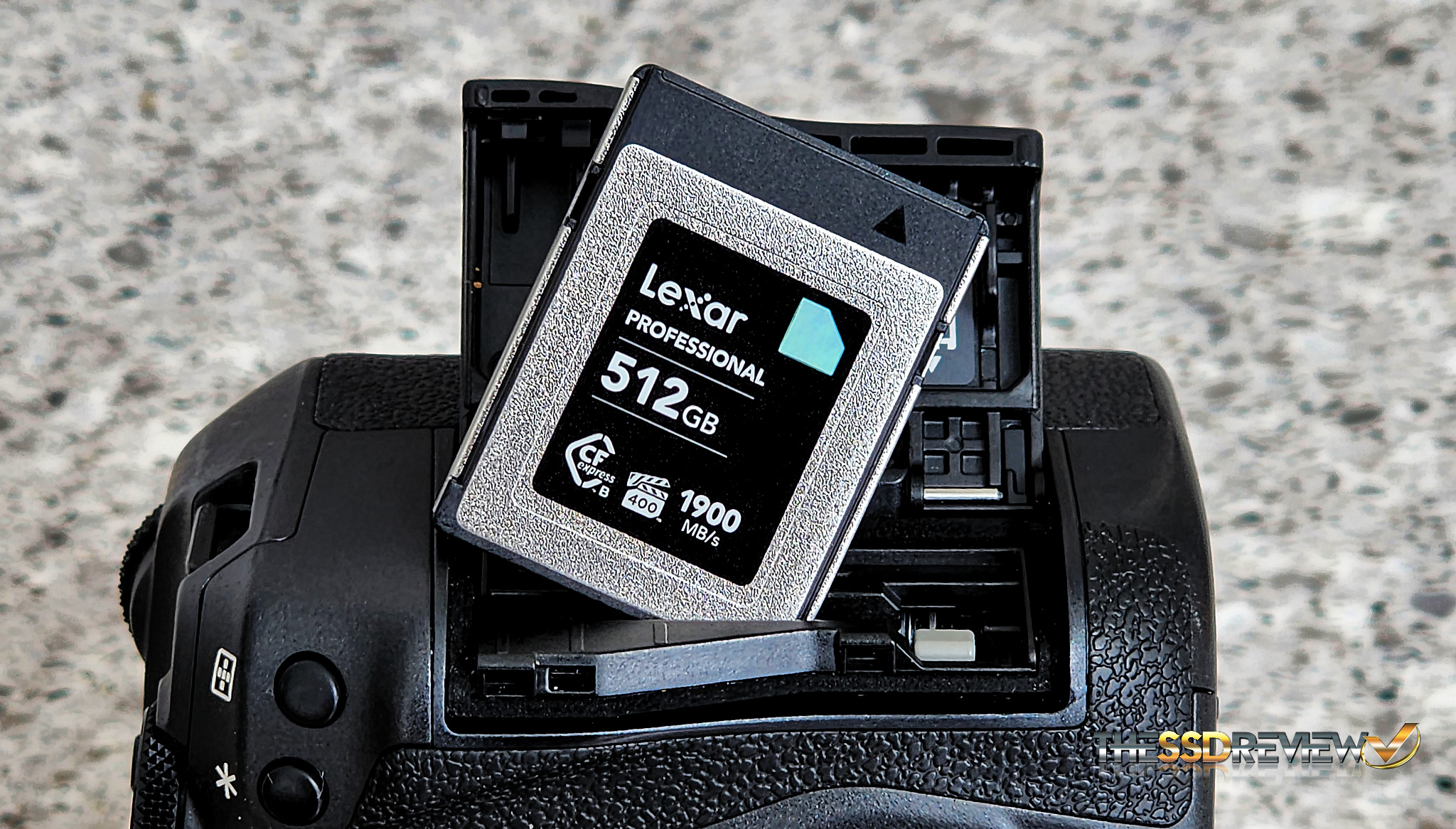John Navitsky
Well-known member
UPDATED 2023-04-11 added Sabrent Rocket w/USB Reader
UPDATED 2023-03-31 using KC011 PCIe to CF Express Card reader
all numbers WRITE
#1 -- 1666.42MB/s Lexar Diamond 128GB (est 25fps) [SSD Review=1683.23]
#2 -- 1629.71MB/s Nexstorage B1 Pro 165BG (est 25fps)
#3 -- 1541.40MB/s Prograde Cobalt 650GB (est 23fps) [SSD Review=1420.52]
#4 -- 1527.24MB/s Delkin Black 650GB (est 23fps)
#5 -- 1543.18MB/s Delkin Black 512GB (est 23fps) [SSD Review=1412.97]
#6 -- 1482.37MB/s Sabrent Rocket 2230 512GB ****with Lexar 2x2 USB reader****
#7 -- _824.59MB/s Lexar Pro 128GB (est 12fps) [SSD Review=1015.75 (512GB)]
#8 -- _489.02MB/s Prograde Gold 512GB (est 7fps)
see post #52 for details
For comparison points:
XX -- 4921.14MB/s -- Samsung 980 Pro NVME in Gen3 slot (est 75fps)
XX -- 2113.70MB/s -- OWC Envoy Pro FX on thunderbolt (advertised as fast thunderbolt + USB drive) (est 32fps)
XX -- 2100.40MB/s -- Macbook Pro HDD (est 32fps)


UPDATED 2023-03-31 using KC011 PCIe to CF Express Card reader
all numbers WRITE
#1 -- 1666.42MB/s Lexar Diamond 128GB (est 25fps) [SSD Review=1683.23]
#2 -- 1629.71MB/s Nexstorage B1 Pro 165BG (est 25fps)
#3 -- 1541.40MB/s Prograde Cobalt 650GB (est 23fps) [SSD Review=1420.52]
#4 -- 1527.24MB/s Delkin Black 650GB (est 23fps)
#5 -- 1543.18MB/s Delkin Black 512GB (est 23fps) [SSD Review=1412.97]
#6 -- 1482.37MB/s Sabrent Rocket 2230 512GB ****with Lexar 2x2 USB reader****
#7 -- _824.59MB/s Lexar Pro 128GB (est 12fps) [SSD Review=1015.75 (512GB)]
#8 -- _489.02MB/s Prograde Gold 512GB (est 7fps)
see post #52 for details
For comparison points:
XX -- 4921.14MB/s -- Samsung 980 Pro NVME in Gen3 slot (est 75fps)
XX -- 2113.70MB/s -- OWC Envoy Pro FX on thunderbolt (advertised as fast thunderbolt + USB drive) (est 32fps)
XX -- 2100.40MB/s -- Macbook Pro HDD (est 32fps)
You can only see EXIF info for this image if you are logged in.
You can only see EXIF info for this image if you are logged in.
Last edited:







